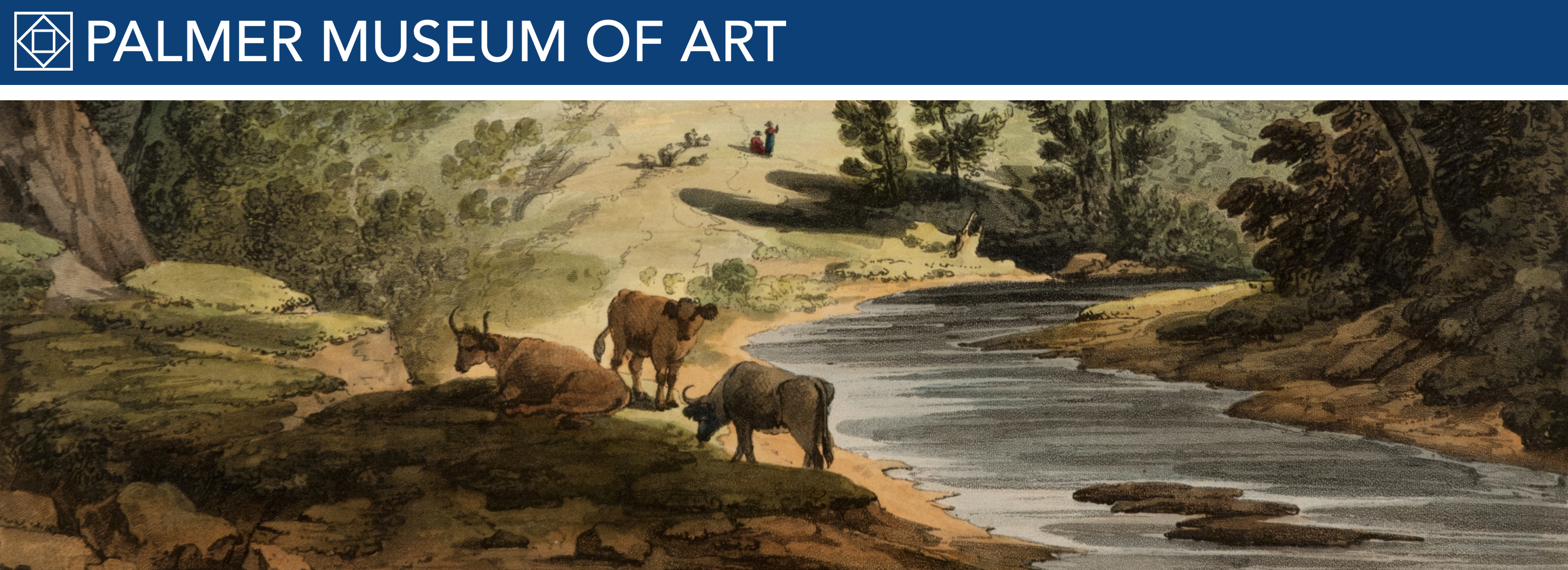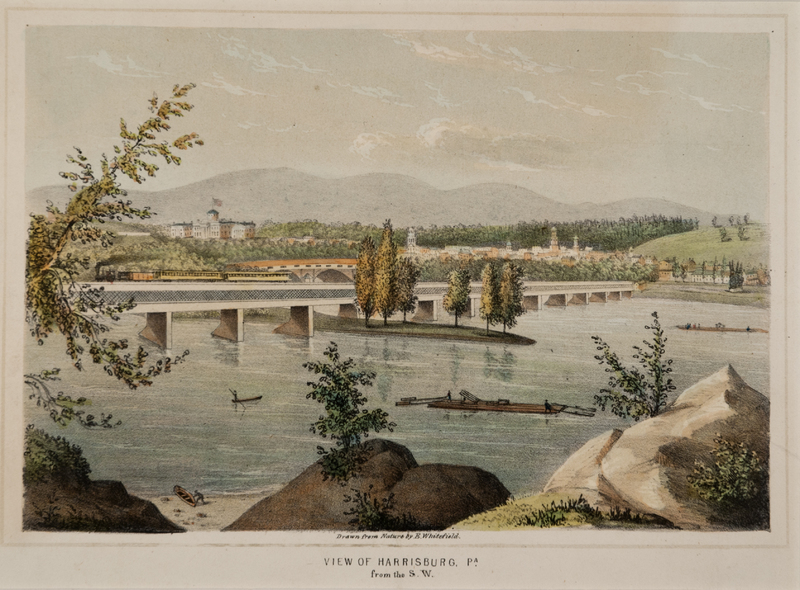Pennsylvania Scenery
Artist unknown
American, nineteenth century?
After Edwin Whitefield
American, b. England, 1816–1892
View of Harrisburg, Pa.
Color lithograph, 7 1/2 x 10 1/8 inches
From North American Scenery
Printed by E. Jones & G. W. Newman, New York
Published in 1846 by H. Long & Brother
Partial gift and purchase from John C. O’Connor and Ralph M. Yeager
86.612
Unlike Nathaniel Willis’s narratives for American Scenery, John Keese’s writings for North American Scenery were closely allied with Whitefield’s imagery. "At the mention of Harrisburg," the text accompanying this lithograph reads, "we are apt to figure to ourselves the very fine, fresh-looking city upon the east bank of the Susquehanna, with its tasteful capitol surmounting the hill, the water-works in the rear thereof, and its handsome bridges."
Two of Keese’s bridges grace Whitefield’s design. Nearest the viewer is the Cumberland Valley Railroad Bridge, built to accommodate rail service between Harrisburg and Chambersburg. The first bridge was destroyed by fire in 1844; the second, depicted here, was completed in 1846 with two decks: an upper to carry trains, and a lower for carriage and pedestrian traffic over the Susquehanna. Just beyond the Cumberland is the eastern section of the Camel Back Bridge, connecting Harrisburg to Wormleysburg, which was washed out by a flood in 1902. Rising above both to the left is the Old Capitol Building—Harrisburg is the state’s capital—which was destroyed by fire in 1897.

